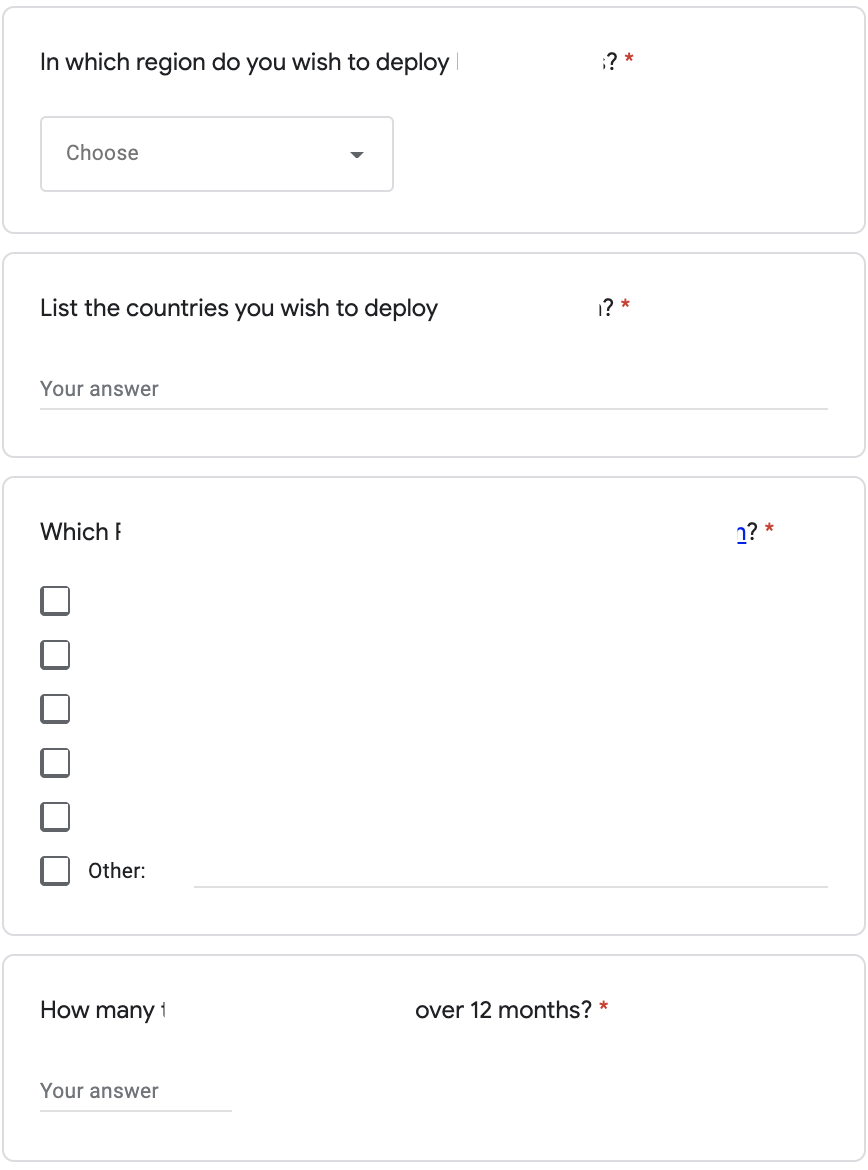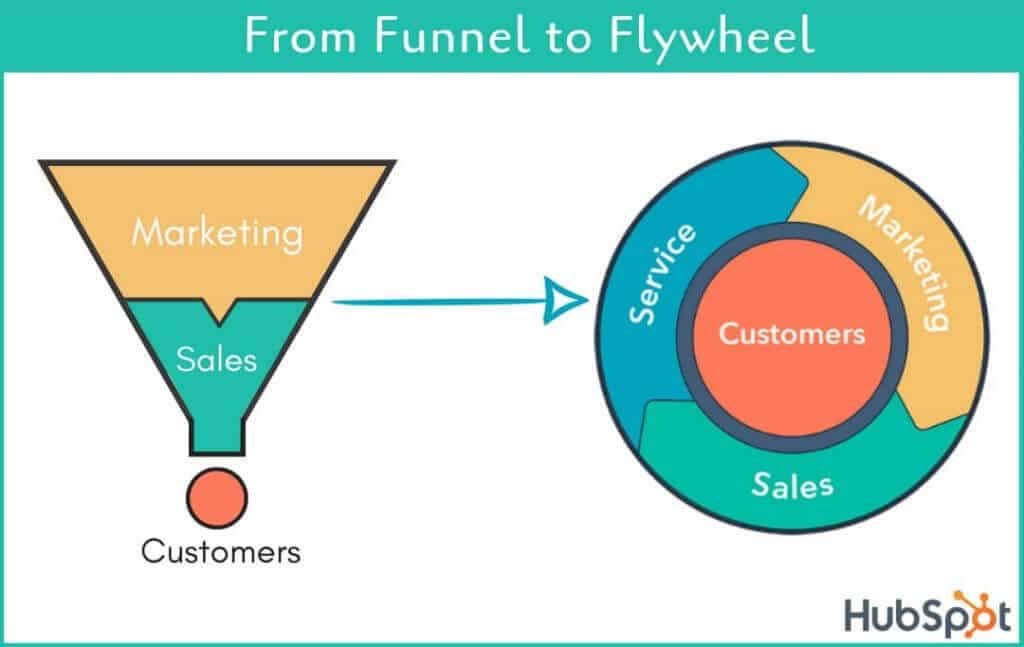One of the main obstacles for B2B marketers is to get sales onboard with the value that can be derived from marketing. Marketing automation and managing website traffic and behavior on the individual level is changing that completely right now. It is estimated that only 25% of leads are actually sales ready and 50% are qualified but not ready for sales.
Still, in 2021, sales teams often work their own lead lists in self-made Excel spreadsheets. They generally believe that they overall are reaching out and directly contacting all relevant people who could be interested in B2B products/services they are offering. Therefore, there’s really no need to spend a lot of time and energy on B2B marketing initiatives besides offline events and meeting customers directly.
Does this sound familiar to you and your organization?
Leads need to be qualified
Well, rest assured that you are not alone. But we also understand where the sales team is coming from: They have been plowing through loads of lead generation from a contact form on the website where the quality of those leads was not ready for sales just yet. Typically a basic contact form for all types of queries for the B2B business.
As a result, sales are not seeing digital marketing and the website as a proper lead generation tool for them. The reaction is often to add more and more mandatory fields to the contact form. There are some really bad cases out there where the main contact form is literally a closed-door for even interested buyers.
Does your contact form look like this?



….And then SUBMIT!
Get a customer-centric focus on engagement – warm up your leads
While the change in attitude and push on web/marketing teams have had a positive impact on lead value, the same attitude is often damaging to understanding what happens with all digital users that visit the B2B website but are not exactly ready yet to spend time filling out how many employees are in their company, etc.
The fact is that many B2B companies generally don’t know who and how many potential leads are hitting their website that is in browsing mode and could be warmed up for taking the time to fill out the form. They assume sales-qualified leads will fill out the form…
The first step is of course to acknowledge and realize that digital marketing today is sophisticated enough to help B2B businesses move customers through the chains and stimulate them only with relevant information based on where they are in the funnel or flywheel and only to reach out when they want to talk.


What behavior says something about potential future customers
The answer is often hard for B2B businesses to answer. Oftentimes, it’s only the actual contact form that is being tracked on, not various engagement types and user behavior that say something about interest.
B2B businesses will know that if people are interested in reading a manual for something highly specific, they might be a potential customer. And while that does not mean they are ready for sales, it does mean that they are susceptible to reading more about a product or service but buy right now. 63% of people requesting information on your company today will not purchase for at least three months – and 20% will take more than 12 months to buy.
Likewise, if people keep coming back to certain articles about price comparison in the market or specific advantages and disadvantages related to specific products, that also indicate increasing interest.
So, the question is: Based on what you know about your potential customers and what they are interested in, how can we create a communication model that nurtures our users and stimulates movement down in the funnel?

How should you segment it?
If we focus a bit on non-customers for now, it’s equally important is it to take into account sales theory and look at things from your sales team’s perspective: When do users go from being a lead to marketing qualified lead (MQL) and then to a sales qualified lead (SQL)?
Defining what constitutes a transition between the categories is imperative to set up a proper integrated marketing communication strategy. And lead scoring is the tool for that.
Use lead scoring to segment correctly
Not all users are created equally. Similarly, not all behaviour scores highly to indicate move from lead to marketing qualified lead.
Setting up lead scoring on an individual user level is the key to give users the right type of interaction when they are ready for more.
For example, is the frequency of website visits and individual page visits a good indicator that a particular user is ready for more. For each pinpointed action, points are added to the user. If a user hits a certain threshold, the user moves to another bracket and will start to receive information fitting that bracket’s needs.
Quite often leads, MQL and SQL are translated to “leads in need of nurturing”, “engaged leads” and “leads ready for sales and/or sales material”. Getting the lead scoring and segmentation right is based on user behaviour and the individual business’ understanding of what triggers movement between the brackets.
Nurture and stimulate customers with marketing automation
People who added their email address are often added to the MQL bracket instantly (email sub score = x amount of points) and from that point on, email marketing automation can take over to a large extent and help users move from MQL to SQL by incrementally adding points based on activity and quality of the activity.
Once you have your segmentation set up and defined what constitutes a specific lead stage, you can start to build your marketing flows for each stage.
Marketing automation workflows are excellent at qualifying user behavior and qualifying those users for the sales team to convert.
Getting sales onboard at the right time is crucial. Now you don’t need an extensive form to make sure they are ready while discouraging potential customers. Sales can get notified automatically and can contact them directly when potential customers have accrued substantial amounts of points via marketing automation. XANT estimates that If you follow up with web leads within 5 minutes, you’re 9 times more likely to convert. Lead scoring directly into CRM gives you that data to act on.
How can you get started
One of the leading platforms within B2B marketing is Hubspot. For most companies, this is a user-friendly and sophisticated platform at the same time. If you have experience with digital marketing, there’s a good chance you are able to set this up for your business on your own.
If you have absolutely no experience with digital marketing and your business is highly dependent on the sales team and isolated spreadsheets, you probably need some help and you should reach out to a B2B marketing expert or agency.
As a certified Hubspot solutions partner, we provide strategic guidance, onboarding, strategy, and implementation for lots of B2B companies looking to harness digital marketing and value creation in the funnel.







0 Comments